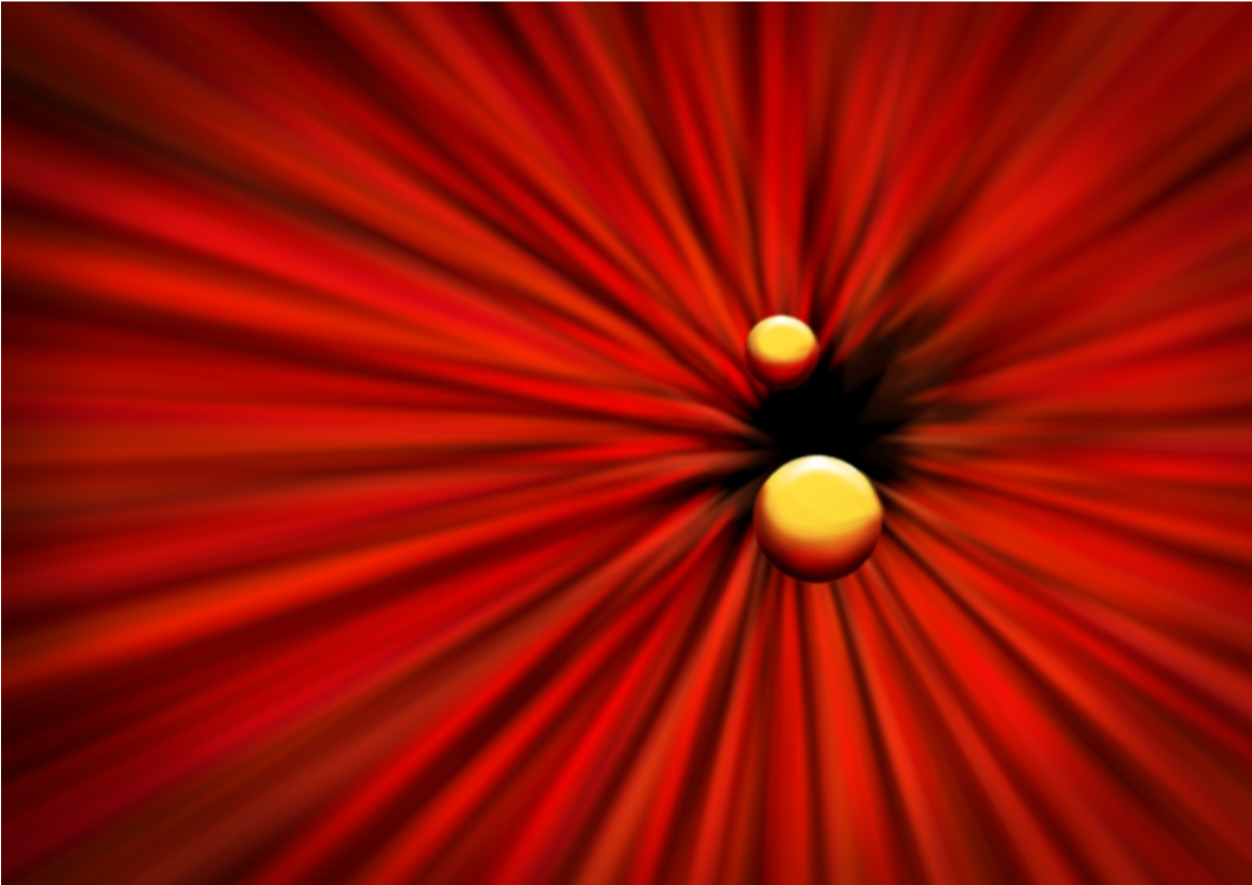
The origin of long-range attractive interactions has fascinated scientists for centuries. The remarkable Fatio de Duillier–LeSage corpuscular theory, introduced as early as 1690 and generalized to electromagnetic waves by Lorentz, proposed that, due to their mutual shadowing, two absorbing particles in an isotropic radiation field experience an attractive force that follows a gravitylike inverse square distance law. Similar “Mock gravity” interactions were later introduced by Spitzer and Gamow in the context of Galaxy formation but their actual relevance in cosmology has never been unambiguously established. Recent work demonstrated that the interaction force between nonabsorbing dielectric particles and atoms in a quasimonochromatic isotropic random light field always present an oscillatory behavior for distances larger than the light wavelength. Our main goal here is to show that, under specific resonant conditions, these forces become nonoscillating, 1/r2, attractive forces.
The interaction between two objects is usually defined to be long ranged if the force decays with their distance apart. Gravity is a typical example of a long-range attractive force in three dimensions while the interaction between electric or magnetic dipoles is borderline in between short and long range attraction. In contrast, dispersion forces between nonpolar, neutral molecules and particles are short range: at close distances the Coulomb interaction between the fluctuating electric dipole moments leads to the van deer Waals–London interaction energy. However, when r is larger than a characteristic resonance wavelength λF, retardation effects become important since the dipole moments fluctuate many times over the period the light takes to pass between particles. The interaction energy varies then as first shown by Casimir and Polder. These interactions can also be derived as a special case of Lifshitz’s theory of attraction between macroscopic bodies induced by equilibrium quantum and thermal electromagnetic field fluctuations.
In the last years there has been an increasing interest in understanding the nonequilibrium analogs of Casimir forces arising in the interaction between bodies at different temperaturelike those induced by blackbody radiation from a hot source on atoms and nanoparticles. Surprisingly strong long-range interactions between atoms or nonabsorbing dielectric particles in a quasimonochromatic fluctuating random field were predicted and experimentally demonstrated for micronsized particles. Although the effective interaction range can be controlled by the spectral bandwidth of the fluctuating field, the existence of three-dimensional artificial gravitylike, inverse square law, interaction forces had not yet been demonstrated. For small separation distances, gravitylike interactions were first predicted by quantum electrodynamics (QED) calculations for atoms and molecules and later by a classical approach on Rayleigh nanoparticles leading to analogous results. In these studies, the imaginary part of the polarizability was either not included in the calculations or was taken into account but considered negligible; i.e., radiation pressure effects were neglected. However, as discussed below, these effects dominate the near-field interactions of nonabsorbing particles, leading to a different interaction law.
In this article published in Physical Review Letters, and in which the Ikerbasque researcher at DIPC Juan José Sáenz took part, it is showed that, in contrast with atoms or dielectric particles, the interaction force between two identical resonant molecules or plasmonic nanoparticles, whose extinction cross section is dominated by absorption, can follow a true attractive inverse square law all the way from near to far-field separation distances. In his celebrated “Lectures on Theoretical Physics”, Lorentz already suggested that electrodynamic interactions in the presence of absorption could lead to an inverse square law interaction force similar to the original Fatio-Lesage’s corpuscular theory. However, as we will see, the ideal nonoscillating law can only be achieved when the frequency of the random field is tuned to the particles’ Fröhlich resonance.
For further information: https://doi.org/10.1103/PhysRevLett.123.143201
.png)
